Site pages
Current course
Participants
General
Module 1: Formation of Gully and Ravine
Module 2: Hydrological Parameters Related to Soil ...
Module 3: Soil Erosion Processes and Estimation
Module 4: Vegetative and Structural Measures for E...
Keywords
Lesson 3 Soil Erosion
3.1 Introduction
Soil erosion is slow and gradual removal of fertile top soil caused by overland flow on sloping lands. It is initiated by formation of rills, followed by gullies, encroachment of desert due to wind effect and erosion of river banks. These have caused major land degradation worldwide.
There are two major types of erosion: geologic and accelerated erosion. Geologic erosion is a natural process of weathering that generally occurs at low rates on the parent rocks as the natural soil-forming processes. It occurs over long geologic time horizons and is not influenced by human activity. Some idea of the ‘geologic time’ can be formed from the fact that a measurable depth of a few centimeters of soil takes thousands year to form due to weathering of parent rocks. Accelerated erosion occurs due to anthropogenic causes such as deforestation, slash-and-burn agriculture, intensive plowing, intensive and uncontrolled grazing, and biomass burning. These activities intensify the factors responsible for erosion and the erosion process is accelerated.
The 'erosion' word was derived from Latin word 'erode' which means to eat away or to excavate. About 111.7 m ha lands in India are degraded due to soil erosion and desertification, 15.5 m ha due to salinity and water logging and 3.2 m ha by nutrients depletion (Lal, 2004). Some country-wise information on soil erosion due the actions of water and wind are given in Table 3.1 and the human activity-induced soil erosion data are given in Table 3.2.
Table 3.1. Land area affected by soil erosion by water and wind in South Asia
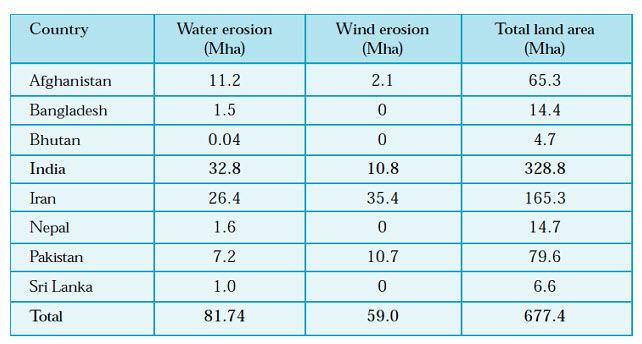
(Source: http://www.wamis.org/agm/pubs/agm8/Paper-15.pdf)
Table 3.2. Global extent of human–induced (Anthropogenic) soil degradation (Lal, 2001)
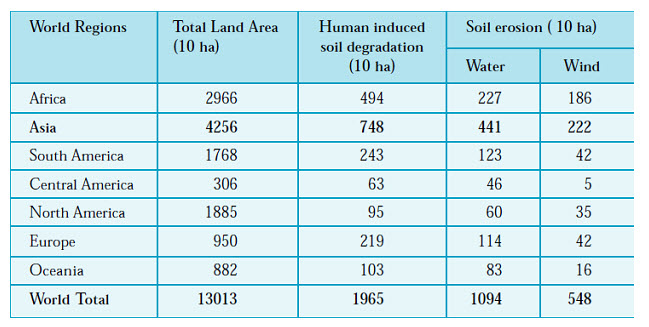
(Source: http://www.wamis.org/agm/pubs/agm8/Paper-15.pdf)
Soil erosion also occurs due to soil compaction, low organic matter, destruction of soil structure, poor internal drainage, salinization, and soil acidity. Although soil erosion is a physical process with considerable variation globally in its severity and frequency, it is also strongly influenced by social, economic, political and institutional factors. The rate of soil loss is normally expressed in units of mass or volume per unit area per unit of time (Young, 1969).
Soil erosion is a three phase phenomena, consisting of the detachment of individual soil particles from the soil mass and their transport by erosive agents such as running water and wind. When sufficient energy is no longer available with the erosive agents to transport the particles, then the third phase called as 'deposition' takes place. Thus, soil erosion may be defined as detachment, transportation and deposition of soil particles from one place to another under the influence of wind, water or gravity forces. The process is illustrated in Figs. 3.2 and 3.3.
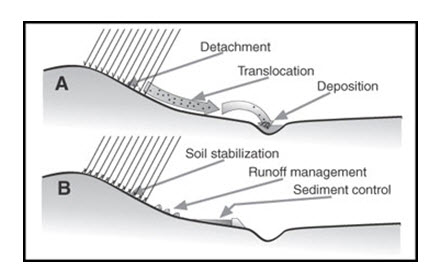
Fig. 3.1. (A) Erosion process, (B) Possible points of intervention. (Source: http://extension.missouri.edu/p/G1509)
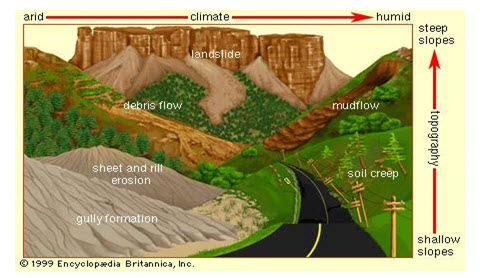
Fig. 3.2. Effect of topography and climate on water-induced soil erosion. (Source: http://www.britannica.com/EBchecked/media/19386/Effect-of topography-and-climate-on-water-induced-soil-erosion)
Economic & Environmental Effects of Erosion
Erosion has long-term consequences on soil quality and short-term consequences on individual crop. Off-site environmental effects are increasing and becoming more unacceptable to those affected as well as the public at large.
Repeated erosion reduces the fertility of the soil by:
Removing top soil which is rich in nutrients and organic matter
Reducing the depth of soil available for rooting and for storing water available for crop growth.
Reducing infiltration of water into soil and increasing run off.
Loss of seeds, seedlings, fertilizers and pesticides, and the need to repeat field operations.
Soil being washed from the roots.
Young plants being blasted with sand during wind erosion.
3.2 Causes of Soil Erosion
There are two types of causes of soil erosion:
a) Natural Causes:
Rainfall
Wind
Flood
Soil Properties
Lack of vegetative Cover
Land use and management practices
b) Anthropogenic Causes
Creating the land surface without vegetation
Road construction
Adoption of faulty tillage practices.
Overgrazing and other forms of biotic pressure on the vegetative cover existing on the land surface
Absence of vegetative cover
Improper construction of water channels, roads, rail lines, cattle trails etc.
The major physical agents such as: topography, rainfall, wind, lack of vegetation cover, soil properties, and land use and management practices are the immediate causes of soil erosion. There are some other indirect agents such as: poverty, technical assistance, infrastructure and market development, commodity policy that are also responsible for soil erosion. These are illustrated in Fig. 3.4.
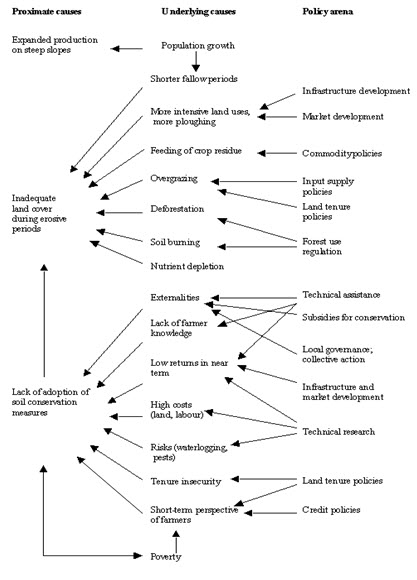
Fig. 3.3. Causes of soil erosion. (Source: http://ilri.org/InfoServ/Webpub/fulldocs/wp36/land.htm)
3.3 Further Explanation of Erosion Process
Erosion process is classified in to two types:
a) Geologic Erosion
It is the soil erosion that occurs in natural condition without the influence of human being. Geologic erosion is also known as natural or normal erosion. This type of erosion contributes to the formation of soils and their distribution on the earth surface. The geologic erosion is a longtime eroding process. Various topographical features such as existence of stream channels, valleys etc. are the results of geologic erosion.
b) Accelerated Erosion
It is the erosion in excess of geologic erosion. It is activated by natural and human activities which have brought about changes in natural cover and soil conditions. In usual course, the accelerated erosion takes place by the action of water, wind, gravity and glaciers. Water causes the soil erosion through sheet flow, stream flow, wave action and ground-water flow. Similarly wind detaches and transports the soil particle and causes a general mixing of the soil at the surface.
The various forces involved in accelerated erosion are as follows:
1) Destabilizing force of water or wind, which removes and transports the soil particles from one place to another
2) Restoring (retarding) forces which resist the erosion. Normally surface characteristics offer resistance to the erosion.
Water and wind are the primary agents that cause the accelerated erosion.
Accelerated erosion can further be sub-classified as:
1) Water Erosion
The erosive action of water can be separated into two categories:
a) Vertical force of falling water; as raindrop erosion.
b) Horizontal force of flowing water; as sheet, rill and gully erosion.
Both forces detach and move soil particles.
(a) Raindrop Erosion (Splash Erosion)
Splash erosion is the first stage of the erosion process. It occurs when raindrops hit bare soil. The explosive impact breaks up soil aggregates so that individual soil particles are ‘splashed’ onto the soil surface. The soil may be splashed into the air up to a height of 50 to 75 cm depending upon the size of rain drops. At the same time, the soil particles also move horizontally as much as 1.50 m on level land surface.
(b) Sheet Erosion
Sheet erosion is defined as more or less uniform removal of soil in the form of a thin layer or in "sheet" form by the flowing water from a given width of sloping land. In sheet erosion, two basic erosion processes are involved:
First process involves the detachment of soil particles from the soil surface by falling raindrops and the second process involves the transportation of soil particles by runoff from their original place.
The detachment process is referred to as the raindrop erosion and transportation of detached particles by flowing water is termed as wash erosion.
(c) Rill Erosion
Rill erosion is the detachment and transport of soil by a concentrated flow of water. Rills are small enough to be removed by normal tillage operations. Rill erosion is the predominate form of erosion under most conditions. It is most serious where intense storm occurs on soils with high-runoff-producing characteristics and highly erodible topsoil.
(d) Gully Erosion
Gully erosion is the mature stage of rill erosion. It produces channels larger than rills. These channels carry water during and immediately after rains. The amount of sediment from gully erosion is usually less than that from upland areas, but the inconvenience due to fields being divided by large gullies has been the major problem.
(e) Stream Bank Erosion
Stream bank erosion is defined as the removal of stream bank soil by water either flowing over the sides of the stream or scouring from there. The stream bank erosion caused by wave action is a continuous process in perennial stream. Stream bank erosion is mainly aggravated due to removal of vegetation, over grazing or cultivation on the area near to the stream banks. Stream banks may also collapse when there is a sudden drawdown of the water surface (usually when a flood recedes). During high flow, the stream bank is saturated with water and during drawdown the bank cannot sustain the high water pressure of the saturated soil and they collapse. The various types of erosion, as discussed above, are illustrated in Fig. 3.5.
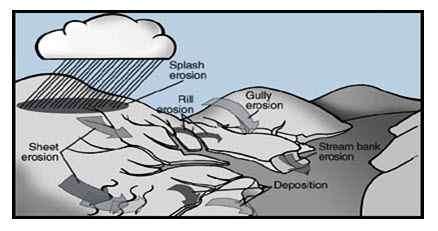
Fig. 3.4. Water erosion. (Source: http://extension.missouri.edu/p/G1509)
2) Wind Erosion
Wind erosion refers to the detachment and transport of soil particles by the forces of moving wind. Wind erosion is the consequence of mismanagement of land resources, such as intensive farming, over grazing, deforestation, etc. These practices destroy the cohesive properties of soil particles and make them susceptible to detachment and movement by wind erosion. Wind erosion is more predominant in arid and semi arid regions because of low annual rainfall. In humid regions, wind erosion occurs only in dry periods of the year, especially when wind blows across cultivated bare fields, having loose, dry and finally divided top soils. Under such condition of land, the high velocity wind produces a large effect on soil erosion. A schematic representation of wind erosion is shown in Fig. 3.6.
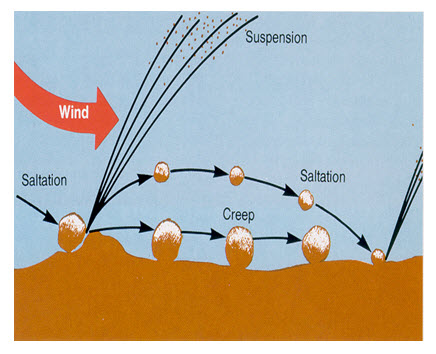
Fig. 3.5. Wind erosion. (Source: http://www.weru.ksu.edu/weps/wepshome.html)
3.4 Other Forms of Erosion
(a) Glacial Erosion
This type of soil erosion is predominant in cold regions, where mean temperature is below 0o C. Most pronounced form of glacial erosion is characterized by furrowing, cutting, and scouring- referred to as execration.
(b) Snow Erosion
Permanent snow cover causes snow erosion. The glacial zones are climatically linked with the zones of snow. In snow erosion, the soil particles are eroded slowly through creeping movement of snow towards leeward slope, where soil is rubbed in downward direction.
(c) Organic Erosion
The soil erosion caused by living organism is called as organic erosion, as illustrated in Fig. 3.7. This type of soil erosion is fairly common in forest. It forms a part of the total destructive geological activities. It is divided into two parts:
a) Phytogenic Erosion- destruction of soil caused by plant root system
b) Zoogenic Erosion- caused by animals, when they move from one place to other place in search of food or excavate for shelters.

Fig. 3.6. Organic erosion (Phytogenic erosion). (Source: http://www.onegeology.org/extra/kids/earthprocesses/weathering.html)
(d) Erosion due to anthropogenic causes
This erosion is associated with the activities of human beings which are responsible to cause soil destruction indirectly. Indirect human activities such as destruction of natural vegetation like deforestation, shifting cultivation, cultivation of crops without soil protection measures, exposing the bare soil, increasing and concentrating runoff and changing the quality of soil are the causes of soil erosion. Deforestation and other anthropogenic activities causing soil erosion are given in Fig. 3.8.
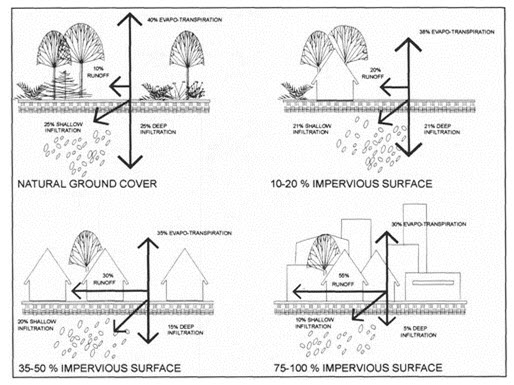
Fig. 3.7. Anthropogenic erosion. (Source: http://www.eoearth.org/article/Surface_runoff?topic=58075)
(e) Underground Erosion
The precipitation causes both surface and underground erosion. The various forms of underground erosion are given below.
i) Intra-soil Erosion
This type of erosion occurs in the soils which comprises of large proportion of gravels or stones that occurs after removal of vegetation. The soil is rapidly washed downward into the coarse Skelton and is partially transported by the underground flow to the lower parts of the slope or in to water courses.
ii) Tunnel Erosion
Tunnel erosion, also known as pipe erosion, is the underground soil erosion and is common in arid and semiarid lands. Tunnel erosion changes the geomorphic and hydrologic characteristics of the affected areas. Runoff in channels, natural cracks, and animal burrows initiates tunnels by infiltrating into and moving thorough dispersible subsoil layers. Presence of water seepage, lateral flow, and interflow is a sign of tunnel erosion. The tunnels or cavities expand to the point where they no longer support the surface weight and collapse, forming potholes and gullies.
(f) River Erosion
This type of erosion occurs particularly in those rivers in which permanent water flow takes place, usually with varying rates. River erosion is likely to be more effective in the water courses of smaller catchment area and those having less favorable conditions for draining the discharge. Fig. 3.9 shows erosion caused by rivers coming down the hill. The kinetic energy causes abrasion and hydraulic action.

Fig. 3.8. River erosion. (Source: http://igeogers.weebly.com/river-environments.html)